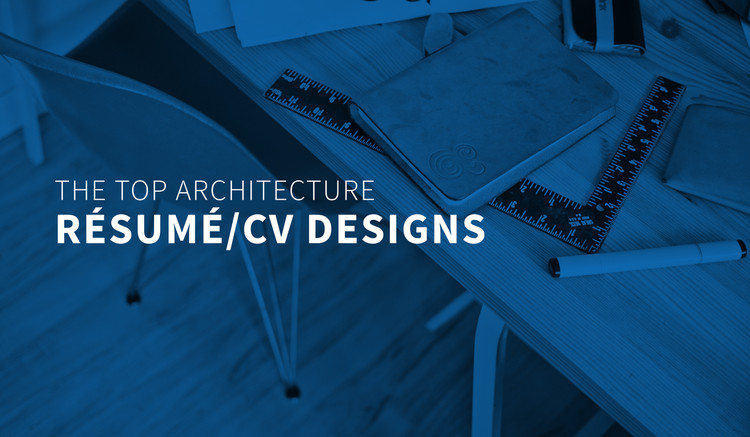
A few months ago we put out a call for the best architecture résumé/CV designs. Between ArchDaily and ArchDaily Brasil we received over 450 CVs from nearly every continent. We witnessed the overwhelming variety and cultural customs of the résumé: some include portraits, others do not; some include personal information about gender and marital status; others do not. In the end, however, we based our selection on the CVs that stood out from the hundreds of submissions. We looked for CVs that transmitted the personality of the designer, their ability to communicate visually and verbally, and perhaps, the most intangible criteria for evaluation—the "creativity" of the CV. The documents below represent the diversity of styles and formats that just might land you a job at your dream firm.
But before we get started, we thought we would take this opportunity to present our top tips for designing your own résumé:
- File Size: If you're a decent designer/architect, then you should know better than to send a file that's over 5MB.
- Typos & Mistakes: If the language of your résumé isn't your native language, turn to online communities or ask someone to proofread your résumé.
- The most creative résumés stand out not only visually, but because they are not difficult to read or understand. Many submissions were elaborate visual mazes of information that weren't aesthetically unpleasing, but utterly impenetrable when it came to understanding key information about the applicant.
- If someone asks you for a CV or résumé, they are not asking you to send a portfolio. However, if you're submitting your CV electronically, it's not a bad idea to include a link to your portfolio!
- Don't copy: It's ok to be inspired by certain designs, but straight-up copying isn't just wrong, it probably won't be the best representation of who you are and the design work you are capable of. If making an unconventional résumé doesn't come naturally, it's probably best to stick to a standard, more classic CV.
- The ArchDaily editors are still on the fence about the trend of "rating yourself" in different areas of expertise. It seems very subjective and less informative than it is visually appealing. The jury's still out on this one.



